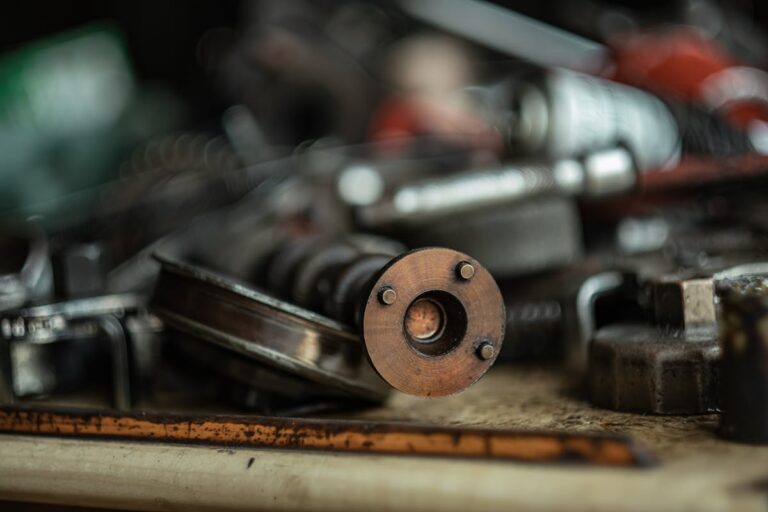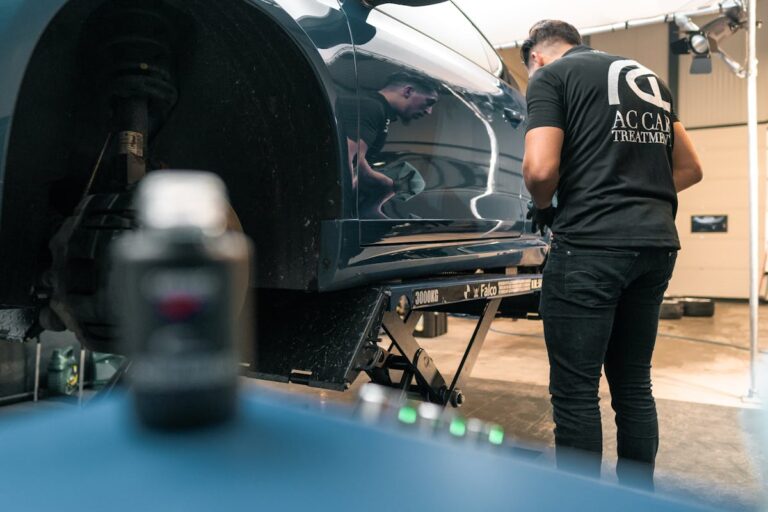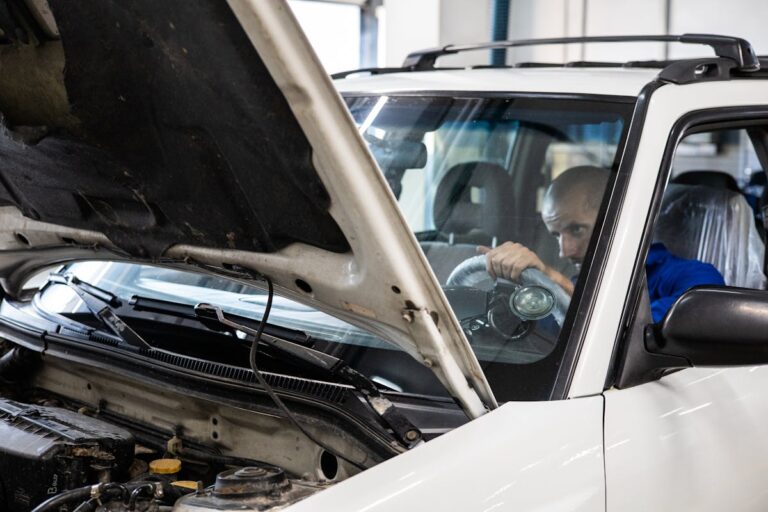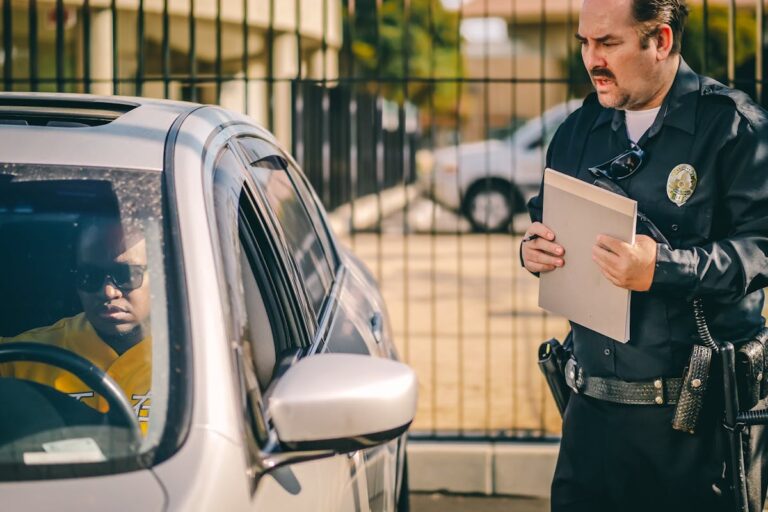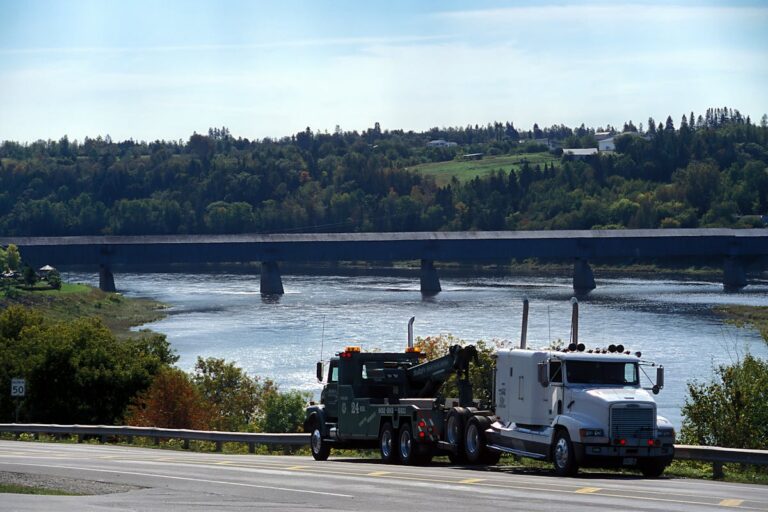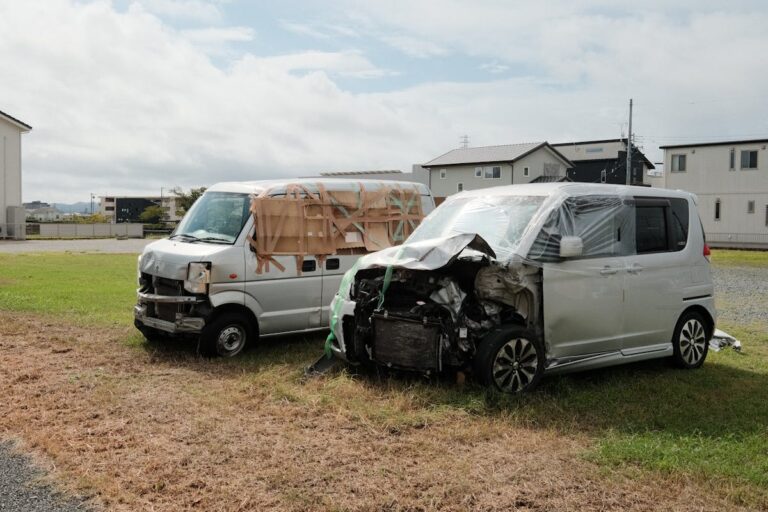Maneuvering the aftermath of a car accident can be a challenging experience, particularly when you discover that your vehicle refuses to start. One might wonder; is it a simple battery issue, a fuel system blockage or potentially a more serious mechanical problem? Understanding the probable causes and the appropriate steps to take in such circumstances is essential. Join us as we explore this topic in depth, discussing immediate safety checks, potential visible damage to look out for, mechanical implications, insurance considerations, and when to seek professional help.
Assessing the Accident Scene
Frequently, the initial step after an accident is evaluating the scene. This evaluation is essential in understanding the accident aftermath and for ensuring safety precautions are upheld.
From a professional perspective, it is important to remain calm and systematic in this phase. A thorough appraisal of the situation not only aids in grasping the extent of the incident but also provides valuable insight for subsequent steps. For instance, it aids in communicating the accurate sequence of events to the relevant authorities, insurance companies, and possibly to a legal counsel.
The scene assessment should include a check for immediate threats to safety such as leaking fuels, fire risks, or dangerous debris. It is also important to note the condition of other involved parties and vehicles.
In the context of a vehicle that won’t start post-accident, the scene assessment could provide initial clues to the potential cause. However, it’s important to remember that this evaluation should not extend to checking for visible damage on your vehicle, which is a separate process discussed later.
Checking for Visible Damage
Upon ensuring personal safety post-accident, the next critical step is to inspect your vehicle for any visible damage. This includes identifying external damages such as dents or broken lights, and evaluating any internal breakdown, like leaks or damaged wiring. Understanding these impacts can provide valuable insights into the cause of the malfunction and the necessary steps for rectification.
Identifying External Damages
Evaluating the external damage to your car after an accident is a critical first step. External inspections should be thorough and systematic, starting from the front of the vehicle and working towards the rear. Look for visible signs of damage such as dents, scrapes, and broken glass. Also, pay attention to potential damage indicators like misaligned body parts, uneven tire wear, or leaking fluids.
Next, examine the lights, mirrors, and windows for cracks or other signs of damage. Your vehicle’s safety features, such as seat belts and airbags, should also be inspected for any signs of deployment or malfunction.
Undertaking these external inspections will not only give you a better understanding of the overall state of your vehicle post-accident, but it will also help in determining whether the vehicle is safe to drive, or if it needs immediate repair.
Remember, while these external damages may appear cosmetic, they can greatly impact the performance and safety of your vehicle. So, it’s crucial to identify and address them promptly.
In the next section, we will discuss how to assess internal breakdowns and the steps to take if your car won’t start after an accident.
Assessing Internal Breakdown
Delving into the interior of your vehicle is the next essential step in evaluating the potential causes of your car’s failure to start post-accident. This process involves a thorough examination of the car’s internal systems, which can be complex and intricate. Therefore, it’s important to have a clear understanding of the critical components and their functions.
You can undertake initial internal diagnostics yourself. These include checking for visible damage to the engine, identifying any unusual sounds, or observing any leaks that may signify a breakdown. However, professional engine troubleshooting is highly recommended to guarantee accurate assessment and avoid causing further damage.
To guide you, here are three fundamental steps:
- Inspect the battery: Confirm it is intact, correctly connected, and has the necessary voltage.
- Check the fuel system: Look for leaks, blockages, or damages to the fuel pump.
- Evaluate the ignition system: Check the spark plugs, ignition coil, and distributor cap for any visible damages.
Understanding Impact Consequences
Having a thorough understanding of the internal mechanisms of your vehicle can greatly assist in identifying potential issues. This knowledge is vital when evaluating the impact consequences after an accident. Visible damage to your car may not always reflect the complete picture of impact severity. Subtle signs, such as fluid leakage or misaligned components, could indicate more considerable underlying problems.
An impact assessment is an essential step in evaluating the accident consequences. This process involves a detailed examination of your vehicle’s exterior and interior, focusing on areas like the engine, radiator, fuel system, and transmission. Not all damage will be apparent or immediate, especially with high-tech components like sensors and onboard computers. As a result, it is crucial to have an expert mechanic conduct a thorough inspection.
Accident consequences can vary from minor cosmetic issues to considerable mechanical failures. Understanding these potential outcomes can help you make informed decisions about your car’s repair or replacement. In some cases, the damage may render the vehicle unsafe or uneconomical to repair. Being aware of these possibilities can greatly influence your post-accident actions and decisions, ultimately aiding in your recovery process.
Understanding Possible Mechanical Issues
In the aftermath of a vehicular accident, several mechanical issues can prevent your car from starting. A keen inspection of the engine, fuel system, and the battery and electrics is necessary to identify potential problems. Each of these components plays an essential role in the overall functionality of the vehicle and any damage to them can greatly impede its ability to start.
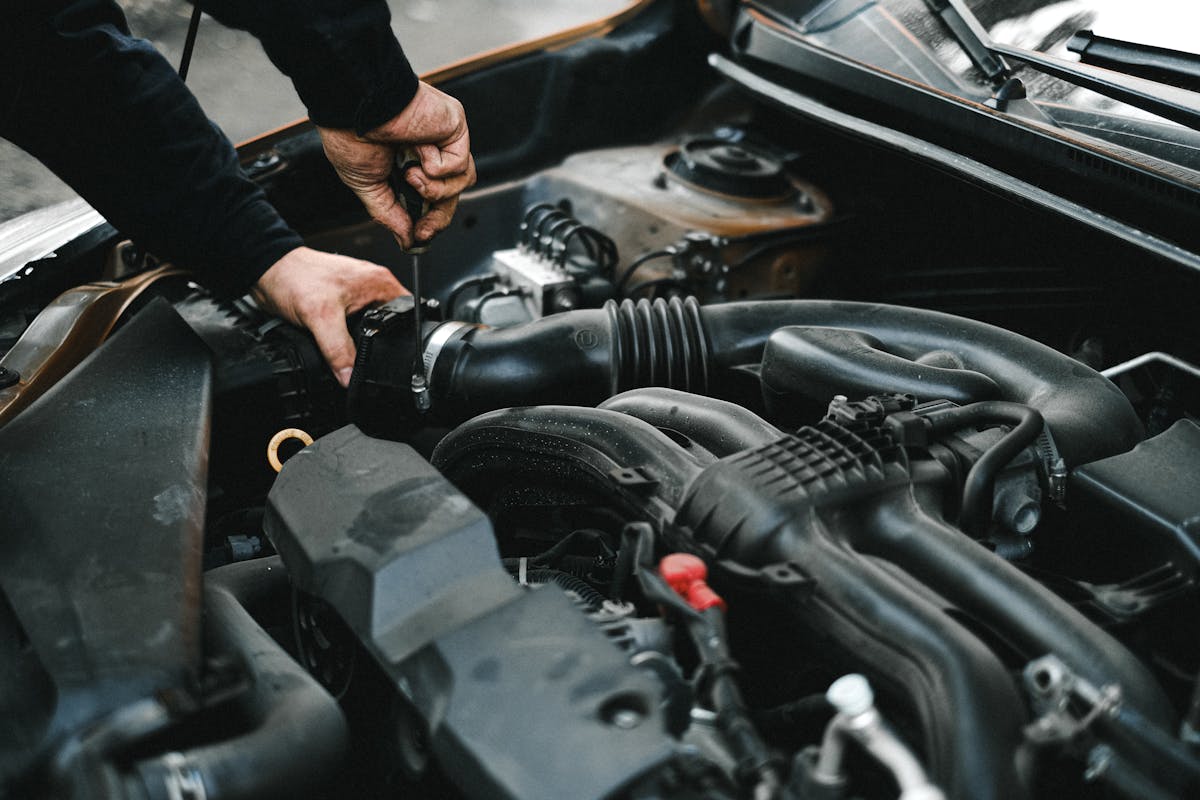
Identifying Engine Damage
Engine damage, a common yet often overlooked result of vehicular accidents, can be an essential reason why your car won’t start. The engine is the heart of your vehicle, and any damage to it might cause significant performance issues, including an inability to start.
Identifying engine damage may involve understanding various signs and symptoms, particularly in relation to engine overheating and oil leaks.
- Engine Overheating: This can be due to a damaged radiator, broken water pump, or a leak in the cooling system. Overheating can cause severe damage to the engine, including warping or cracking of engine parts.
- Oil Leaks: Oil is vital for lubricating the engine parts and reducing friction. A leak may lead to inadequate oil supply, causing engine parts to wear out faster and potentially leading to engine failure.
- Unusual Noises: Odd sounds such as knocking, popping, or hissing can indicate possible engine damage. These noises may be a sign of problems with the pistons, valves, or internal parts of the engine.
Understanding and identifying these symptoms early can save you from costly repairs and extend the life of your vehicle’s engine. Be vigilant and seek professional help when necessary.
Assessing Fuel System Issues
One may often overlook the role of the fuel system in a vehicle’s operation, especially after experiencing an accident. The fuel system is vital, as it regulates and delivers the fuel from the tank to the engine. Any damage to this system can prevent a car from starting or running smoothly.
At the heart of the fuel system is the fuel pump, an integral component that propels fuel from the tank to the engine. It can suffer damage during an accident, leading to a failure in fuel delivery. Symptoms of a failing fuel pump can include engine sputtering, decreased fuel efficiency, or the vehicle not starting at all.
Equally important are the fuel lines, which transport the fuel from the tank to the engine. Damage or leaks in these lines can cause fuel loss, pressure issues, or contamination, which may inhibit the vehicle’s operation. Examining these lines post-accident is essential to guarantee their integrity.
Therefore, when evaluating fuel system issues after an accident, special attention should be given to the fuel pump and fuel lines. Identifying and repairing any damage to these components is paramount in restoring your vehicle’s functionality.
Checking Battery and Electrics
Having survived a vehicular accident, you might find your car’s battery and electrical system compromised, presenting another potential reason for the vehicle’s refusal to start. Collisions can jolt the battery, leading to loose connections, or damage the electrical system, disrupting the flow of current necessary to start and run the car.
A critical step in diagnosing a non-starting car after an accident is checking the battery and its connections. A loose battery connection may be the culprit, preventing the necessary electrical flow. Damage to the battery itself, such as a cracked casing, could also cause issues.
The electrical system, comprised of various components, may have been compromised during the accident. Wires could be severed or components displaced, disrupting the vehicle’s electrical circuit.
To engage you further, here’s a three-step process to follow: 1. Check the battery connection. Verify it’s secure and free from damage or corrosion. 2. Inspect the battery for visible damage. If found, replace it immediately. 3. Examine the electrical system, focusing on visible wires and components for signs of damage.
Contacting Your Insurance Company
After an accident, contacting your insurance company is a fundamental step that should not be overlooked. It is imperative to inform them about the incident promptly to initiate the process of filing claims, which becomes the foundation for any subsequent action.
Every insurance company has its own set of procedures for filing claims; hence, it is advantageous to familiarize yourself with your insurer’s specific guidelines. This could be done by visiting their website or by directly contacting them. It’s essential to acknowledge that the time to report an accident may vary based on your insurer, so do not delay this fundamental step.
Understanding your policy coverage is equally significant in this situation. It provides you with a clear picture of what damages are covered and what are not. This can include coverage for repairs or replacements, towing services, rental cars, and more. It’s advisable to review your policy to verify you are fully aware of your coverage and limitations, if any.
Remember to document the accident scene thoroughly, if possible. This could include photographs, witness statements, and police reports. Such evidence can greatly aid your claims process, making it smoother and faster. Be sure to keep all relevant documents organized and readily available for your insurance company.
Seeking Professional Help
In many cases, the aftermath of an accident may require the expertise of a professional mechanic. Finding mechanics who are reliable, experienced, and transparent about their pricing can be an intimidating task. However, it’s an important step to getting your vehicle back on the road. Understanding estimates provided by mechanics can also be complex, but it is vital to verify you’re not being overcharged for repairs.
Here are three key steps to take into account:
- Research: Look for mechanics with high ratings and positive reviews. Check their certifications and ask about their experience with your car’s make and model.
- Get Estimates: Ask for a detailed estimate upfront. This should include the cost of parts, labor, and any additional services. Compare this with estimates from other mechanics to confirm you’re getting a fair price.
- Ask Questions: Don’t hesitate to ask about anything you don’t understand in the estimate. A good mechanic should be able to explain everything clearly and patiently.
In the end, seeking professional help after a car accident is about more than just fixing your car—it’s about working with a service you can trust.
Preventative Measures for Future
While it is important to know how to handle a situation where a car won’t start after an accident, it’s equally significant to be proactive in reducing the chances of this occurrence in the future. This forward-thinking approach involves a commitment to preventative maintenance and regular safety inspections.
Preventative maintenance is a thorough strategy that includes regular oil changes, tire rotation, and checking fluid levels. This routine care can help identify potential issues before they escalate into significant problems. For example, a simple brake inspection can prevent a hefty repair bill, or worse, a brake failure leading to an accident.
Safety inspections, on the other hand, are an integral part of car ownership. They involve reviewing the vehicle’s overall condition, checking the operation of lights, brakes, and windshield wipers, and ensuring the vehicle’s safety features are functioning correctly. These inspections, often undertaken annually, can detect any hidden damage that may cause your car to malfunction following an accident.
Preventative measures not only enhance your vehicle’s longevity but also contribute to road safety. Being proactive can save you the trouble of dealing with a car that won’t start after an accident, ensuring your peace of mind on the road.
Dealing With Long-Term Car Problems
Though car accidents can cause immediate and noticeable damage, they can also lead to long-term car problems that may not become evident until much later. Such issues can be frustrating and costly, particularly as they can escalate if not promptly addressed. This makes long-term maintenance an essential aspect after a car accident.
The following points provide a guide to dealing with long-term car problems effectively:
- Regular Inspection: Guarantee regular checks to identify any latent issues. This step can preempt expensive repair costs down the line.
- Insurance Claims: If possible, include future repair costs in your insurance claim. This can mitigate the financial impact of long-term issues.
- Professional Assistance: Engage a professional mechanic for complex issues. Their expertise can prevent further damage and save on repair costs.
Frequently Asked Questions
What if My Car Wont Start Due to a Battery Issue?
If your car won’t start due to a battery issue, consider battery maintenance or a jump start. Consult a professional if problems persist, as it may indicate a more serious underlying mechanical problem.
Can I Jump-Start the Car After an Accident?
Yes, you can attempt to jump-start your vehicle after an accident. However, make certain the battery connections are intact and unharmed. Always prioritize safety precautions, such as wearing protective gear and maintaining a safe distance.
How Do I Determine if Its a Fuel System Problem?
To determine if it’s a fuel system issue, listen for the fuel pump’s humming noise when the ignition is turned on. Also, check for a clogged fuel filter, which would restrict fuel flow.
What Steps Should I Take if My Car Is Flooded With Water?
If your car is flooded with water, initially document the water damage for insurance claims. Then, contact a professional mechanic to evaluate potential damages. Avoid starting the car to prevent further electrical or mechanical damage.
Can a Blown Fuse Prevent My Car From Starting After a Crash?
Yes, a blown fuse can indeed prevent your car from starting after a crash. A thorough electrical diagnosis is required to pinpoint the issue. Fuse replacement may be necessary to rectify the situation and restore functionality.
